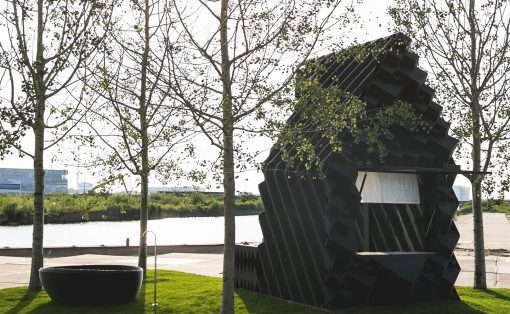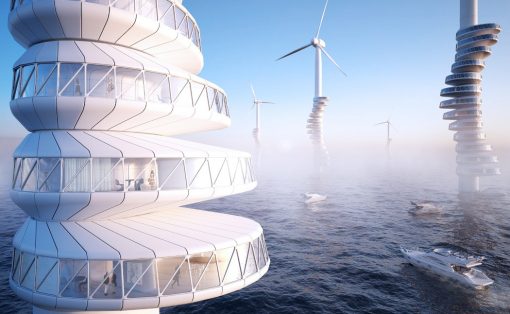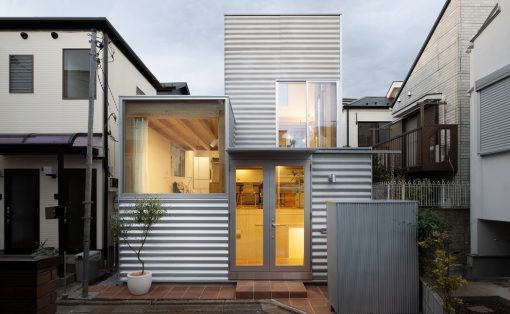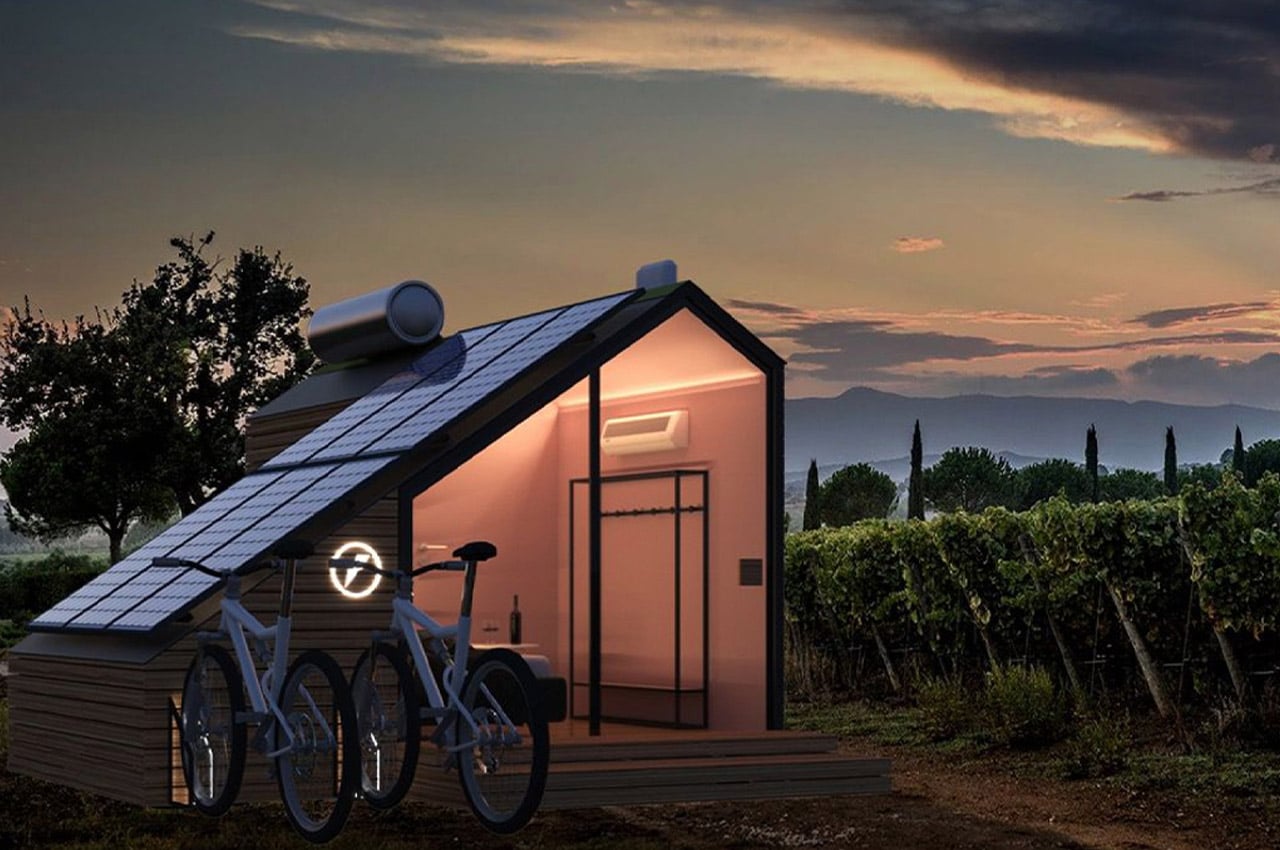
Solar power is an amazing source of energy and a sustainable and cleaner alternative to fossil fuels. Today solar energy is being used to power almost everything – from tiny battery packs to whole houses! There are no exceptions. And solar-powered architecture seems to be the new craze these days and a very green one too! From holiday cabins to tiny homes, solar energy is being used to power and support all kinds of architectural structures. And we’ve curated a collection of cozy, functional, and solar-powered architectural homes that are comfortable to stay in, aesthetic to look at, and also a boon to the planet. These structures coexist in harmony with their surroundings and do not drain but in fact, respect the natural environment around them! From a tiny home that features a solar system for off-grid living to a 40sqm home with a 30-degree solar-paneled roof – I wouldn’t mind living in one of these homes!
1. E-glamp
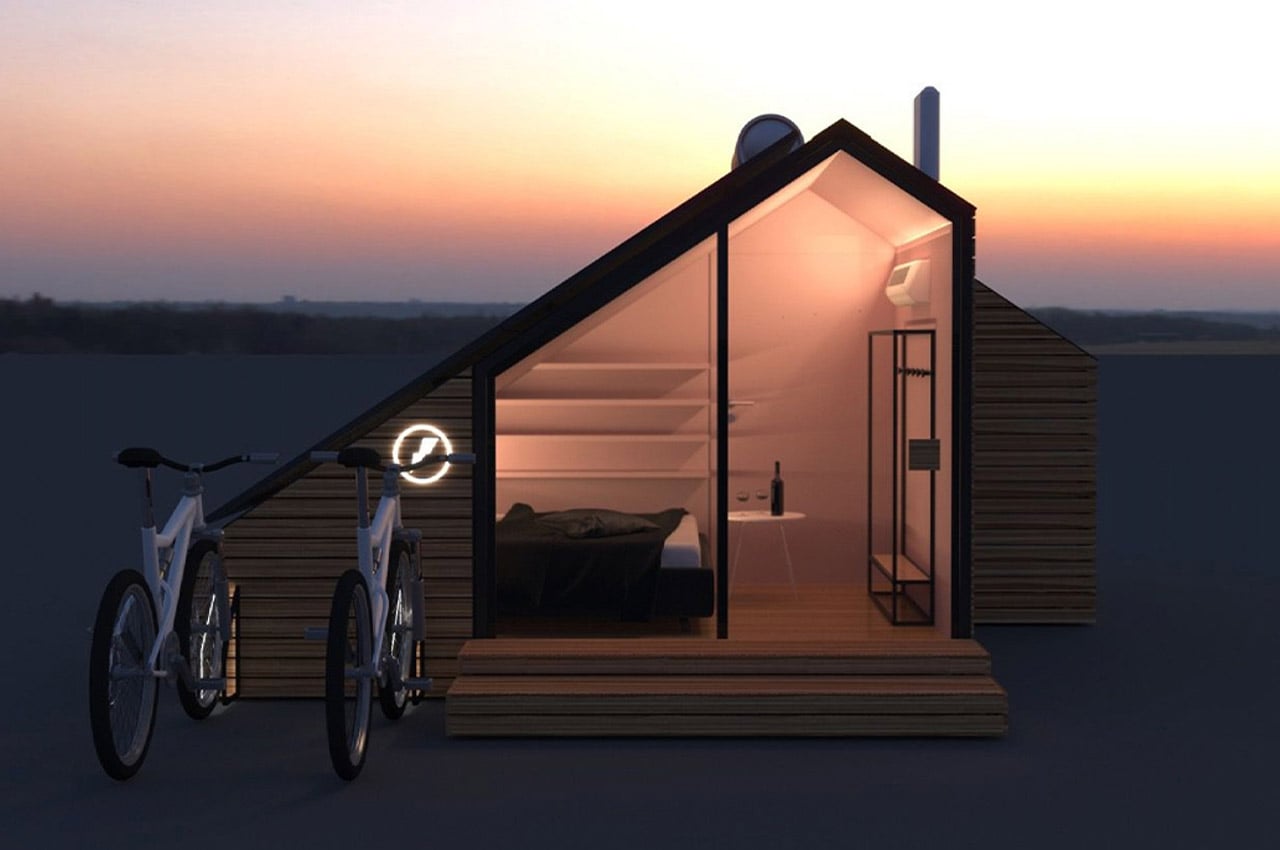
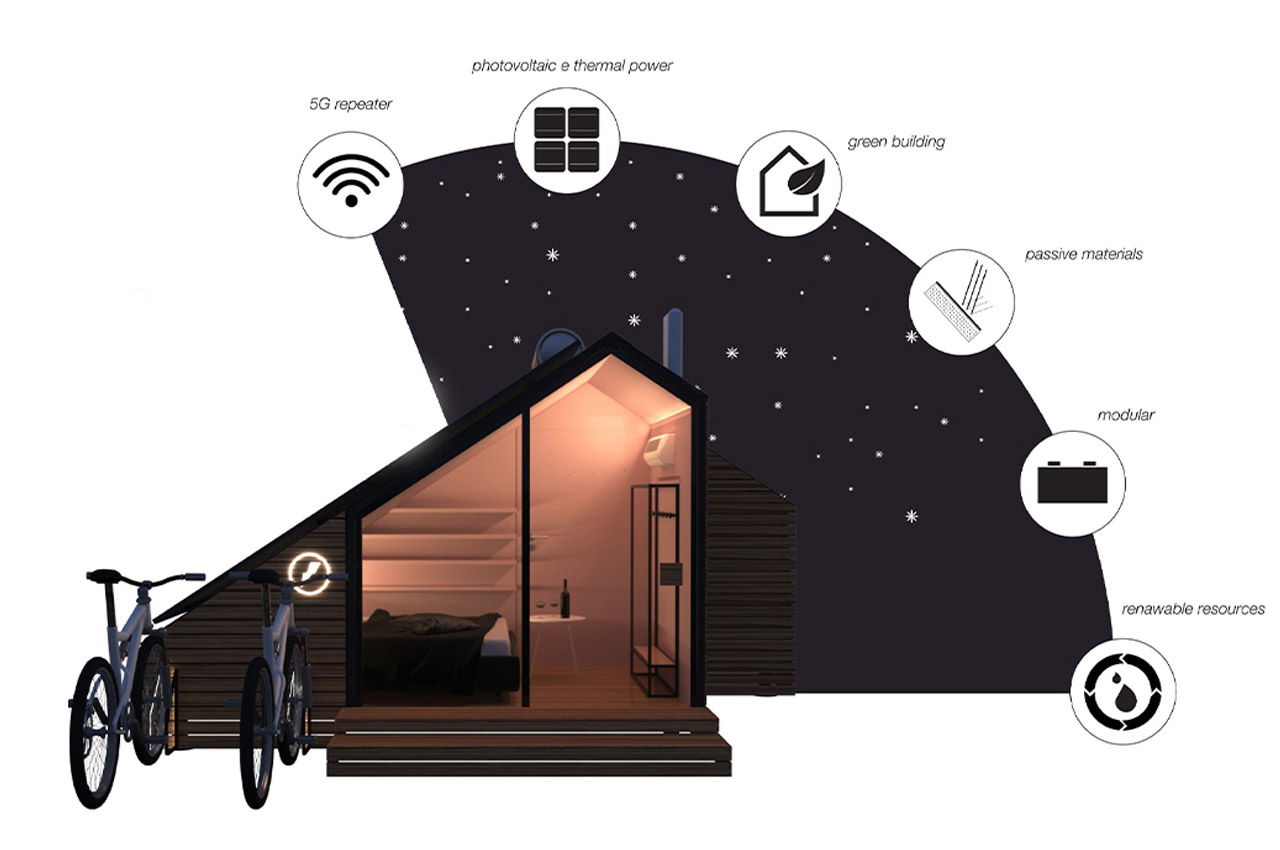
E-glamp is a product/service that has been designed to boost economic and tourist development in rural areas. Think of it as an Airbnb-style tiny house merged with a biking network like Bird or Lime. It is an integrated system of modern cabins that are all independently powered by solar panels. These tiny homes are also fitted with smart tech and are connected to the e-bike system which encourages carbon-neutral exploration of the landscape. Biking not only helps to maintain the pristine air quality of the rural area but also helps in getting an enjoyable workout in. All the E-glamp houses are modular, movable, and constructed with sustainable materials like timber. Along with solar panels, it will be interesting to see how the design is able to also repurpose and reuse rainwater for the guest’s needs.
2. The PowerHYDE housing model
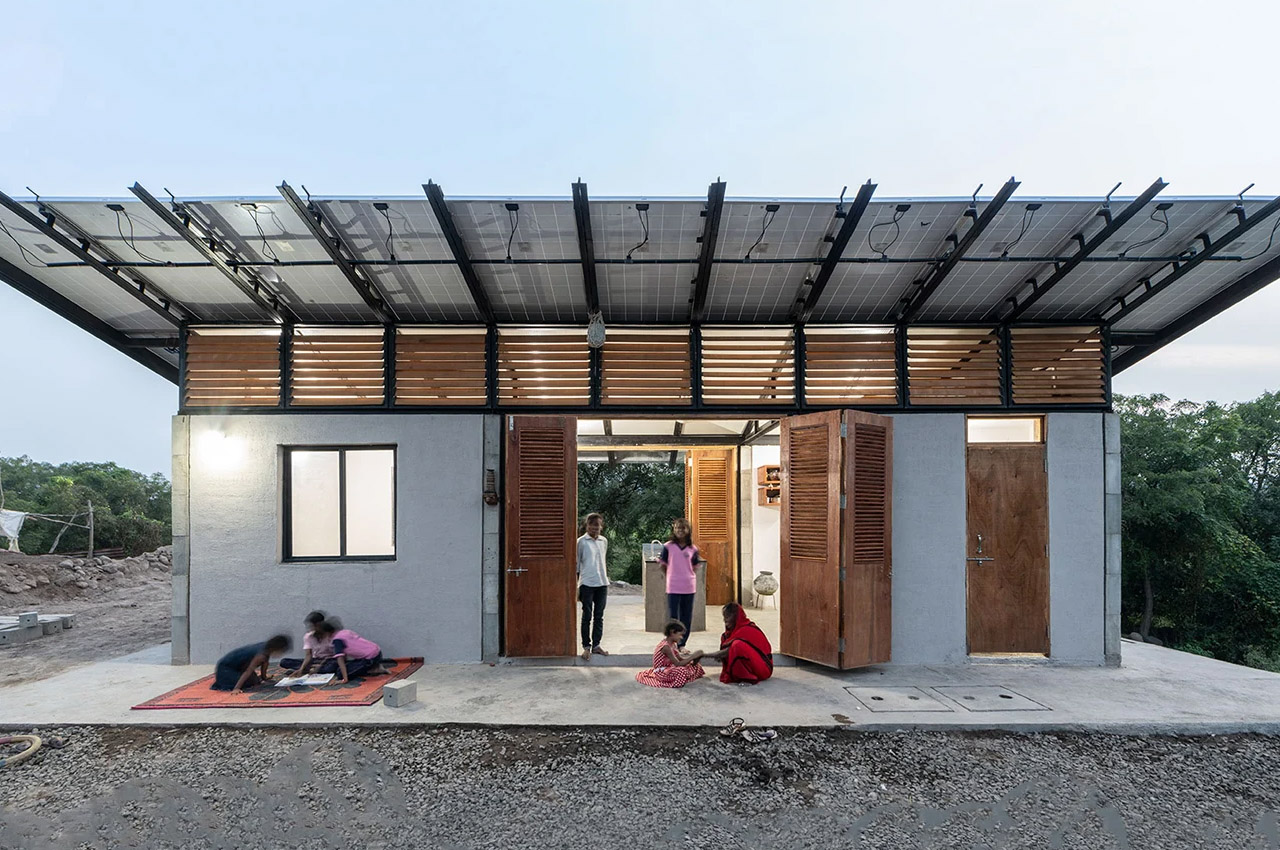
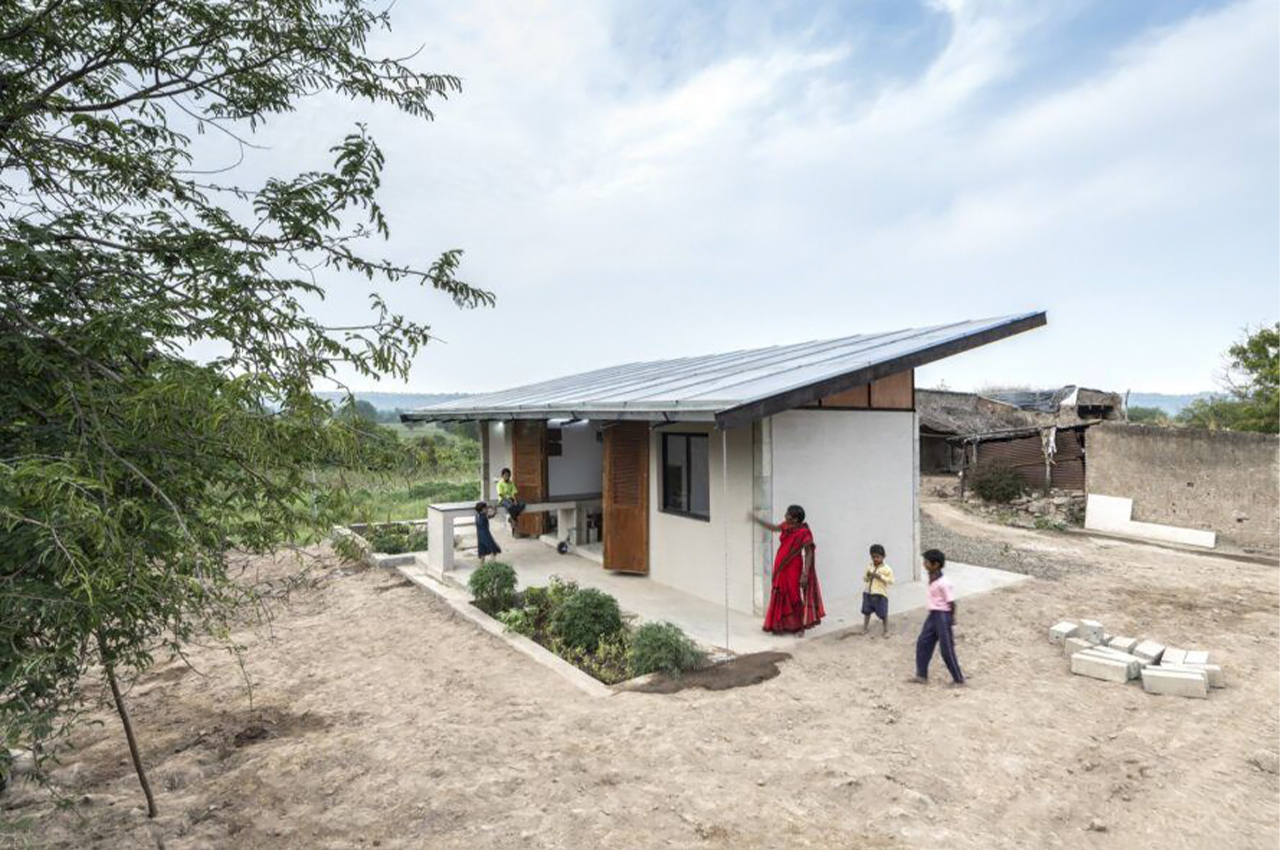
Net-zero architecture is what will reduce emissions from the construction industry on a large scale. But make it inclusive as well as scalable and you also get a solution that can lift homeowners out of poverty while building a community! Created for that very purpose, these solar homes are aiming to help solve both the global housing and climate crises with one design. The houses produce their energy, harvest 100% of the rainwater, clean their sewage, and also have the potential to grow their own food! It is called the PowerHYDE housing model and was created by Prasoon Kumar and Robert Verrijt of Billion Bricks from India and Singapore.
3. Kingfisher
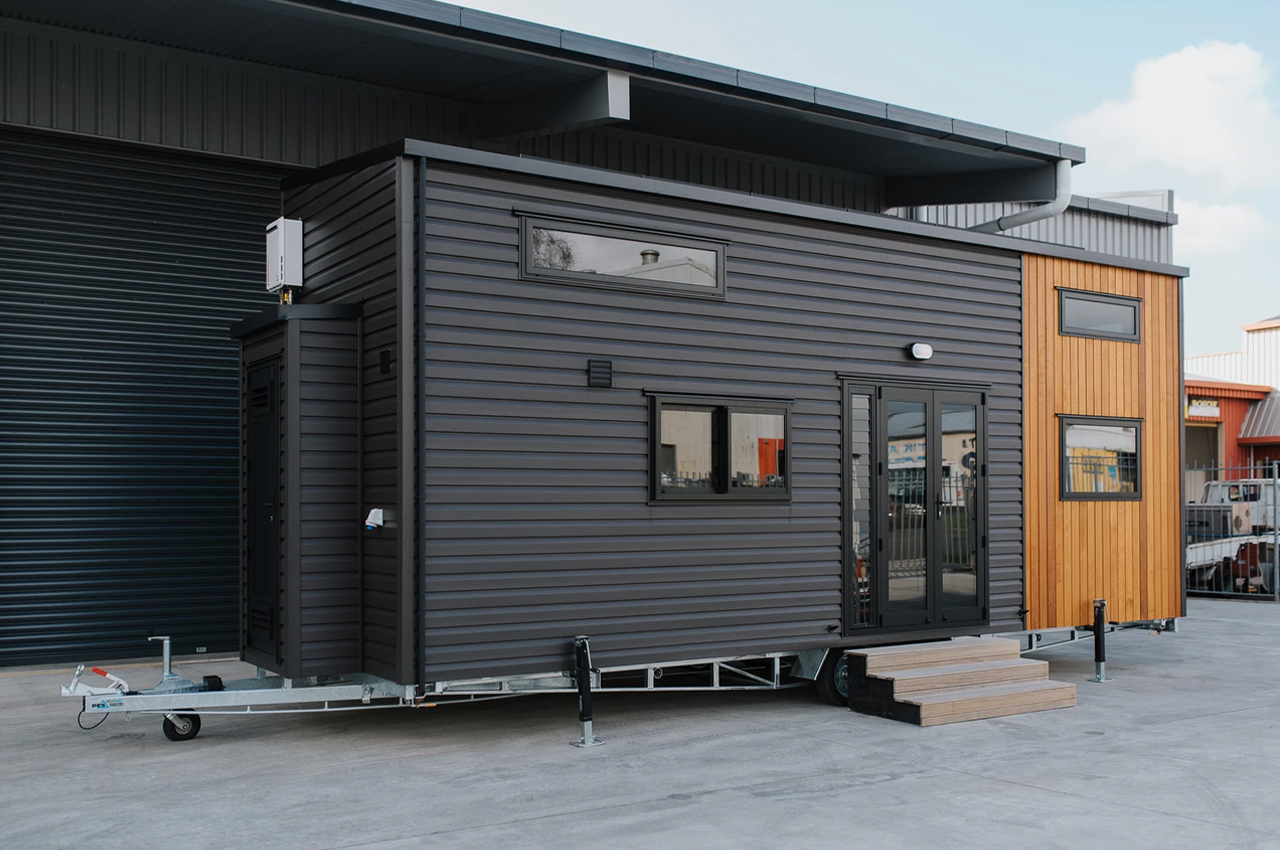
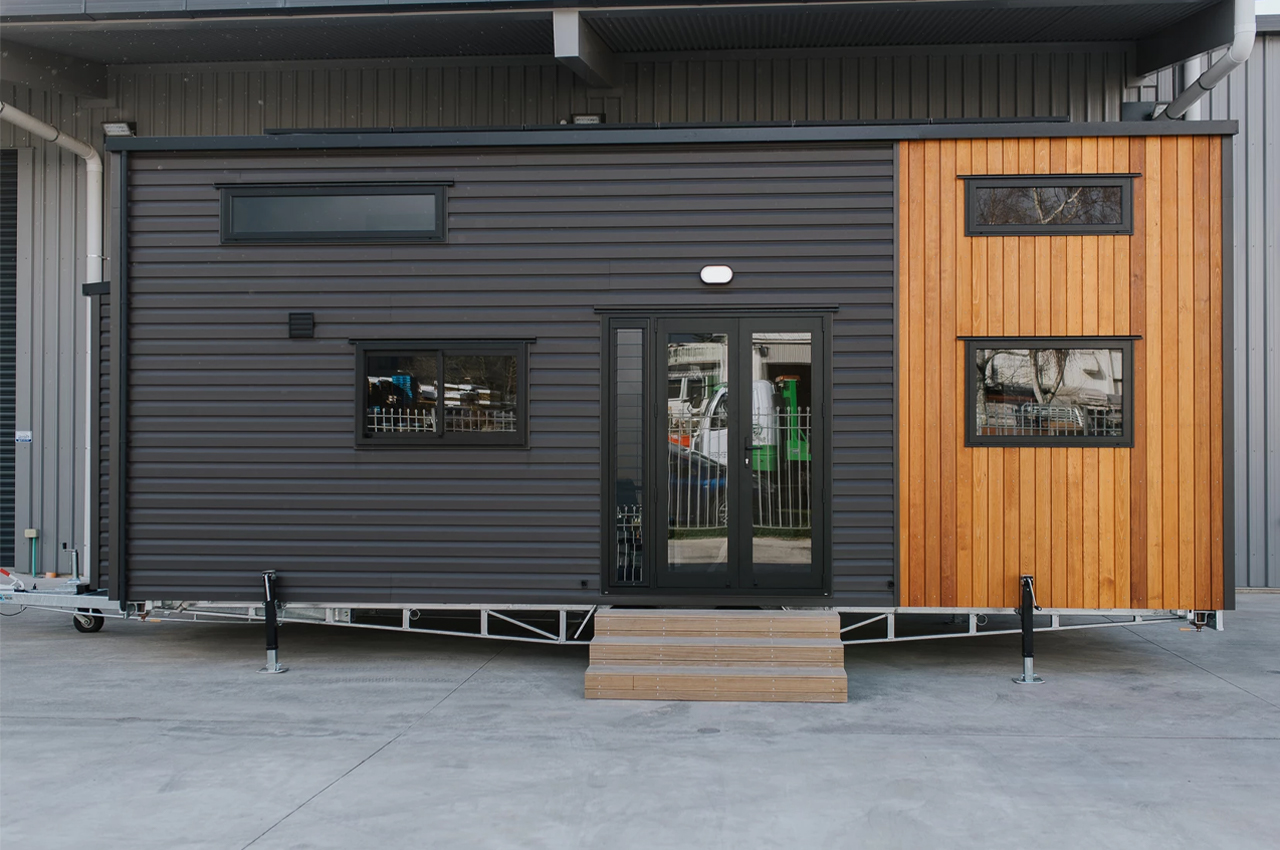
Measuring 8m long x 2.4w x 4.2h, Kingfisher keeps an average, approachable size. From the outside, Kingfisher sports a steel frame clad in vinyl with a cedar feature wall to the side that’s lined with vertical timber panels. The aluminum windows are double glazed to provide ultimate thermal insulation during the colder months. Placed on top of the pitched roof, Build Tiny provided Kingfisher with a solar system for off-grid power, consisting of 6 x Trina 270w Honey Poly Module panels.
4. Electric Bungalow
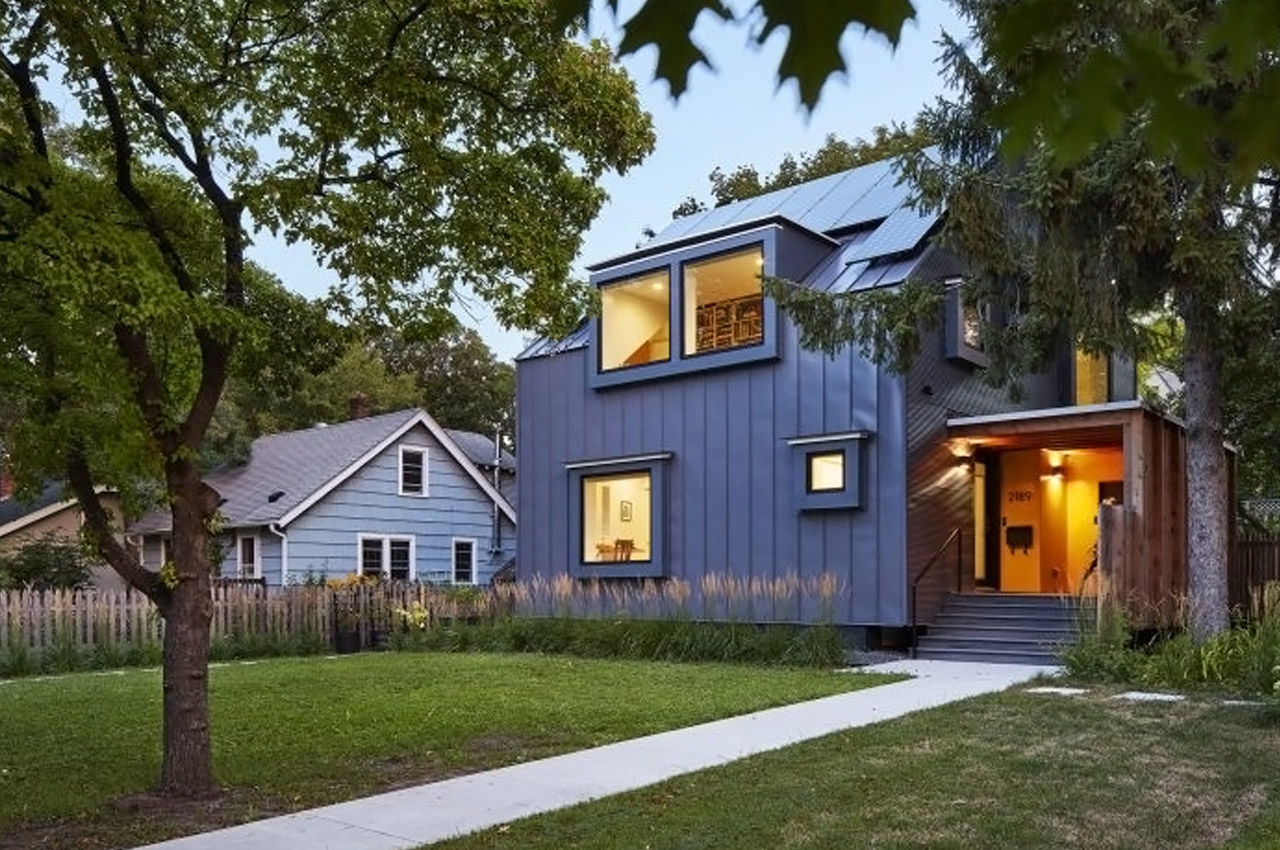
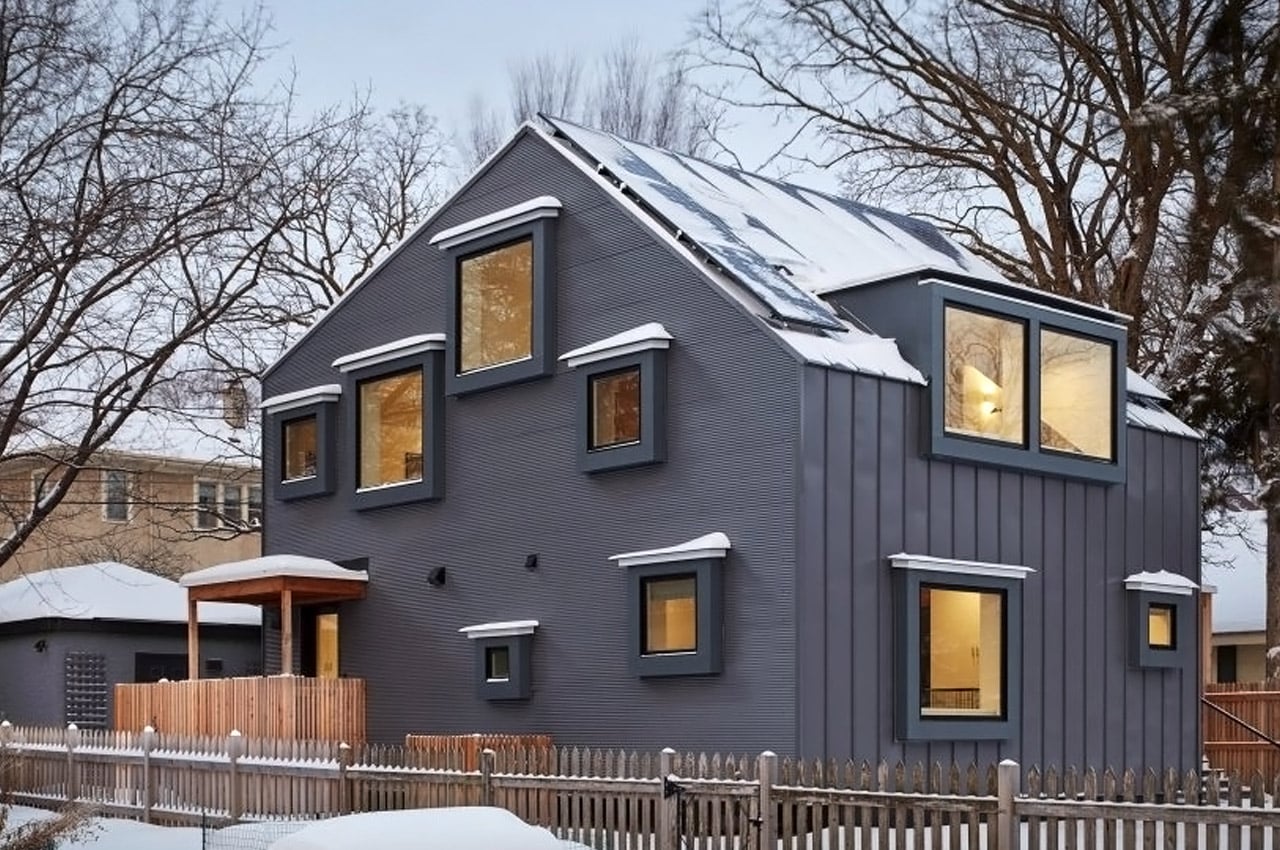
Salmela Architect designed a solar-powered house called ‘Electric Bungalow’. It’s a new style of single-family housing, and a really eco-friendly one. The residents “envisioned a new home that could serve as a prototype for building environmentally friendly, self-powered infill housing that was sensitive to the existing neighborhood form within a relatively modest budget,” said the firm.
5. The Off Grid House
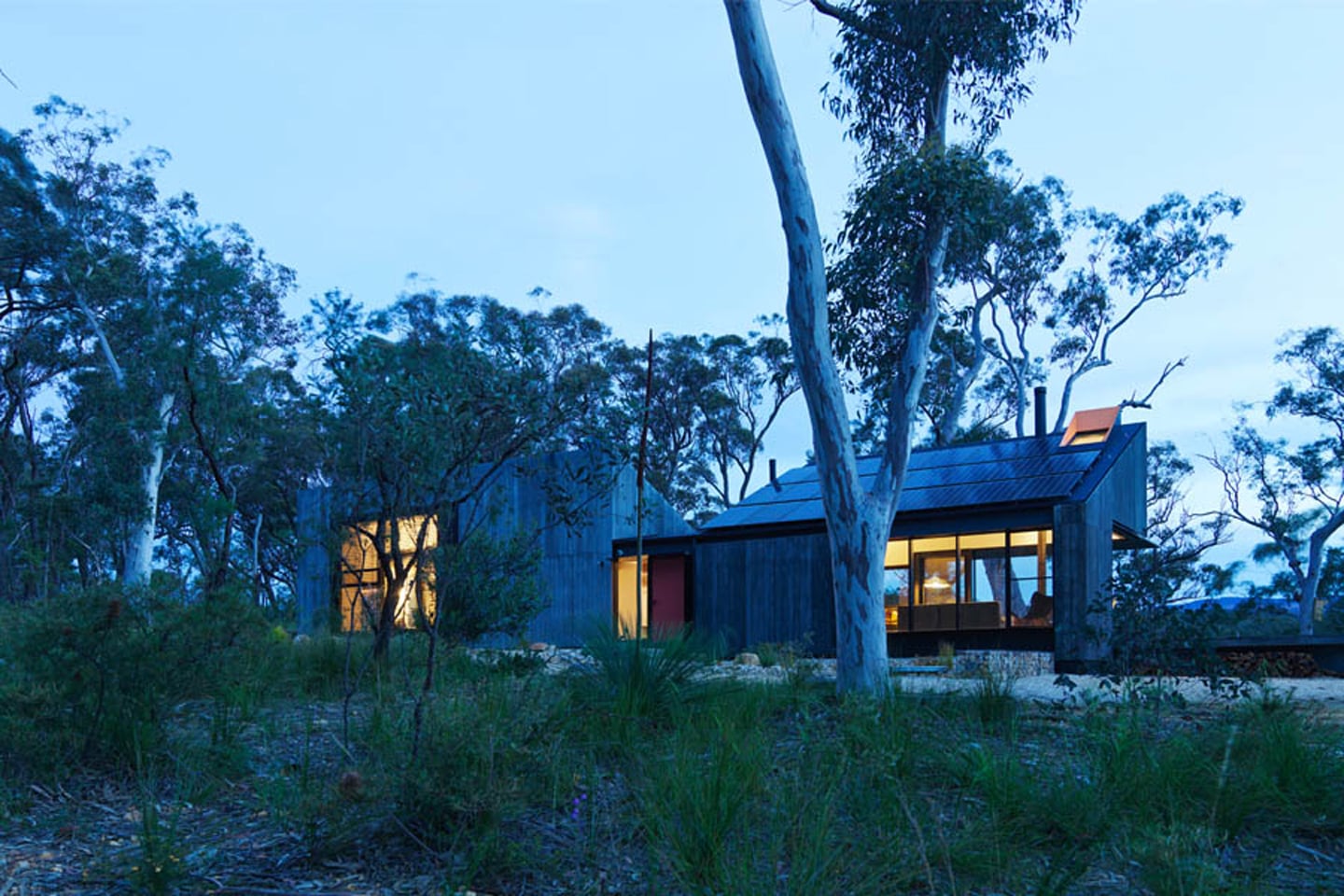
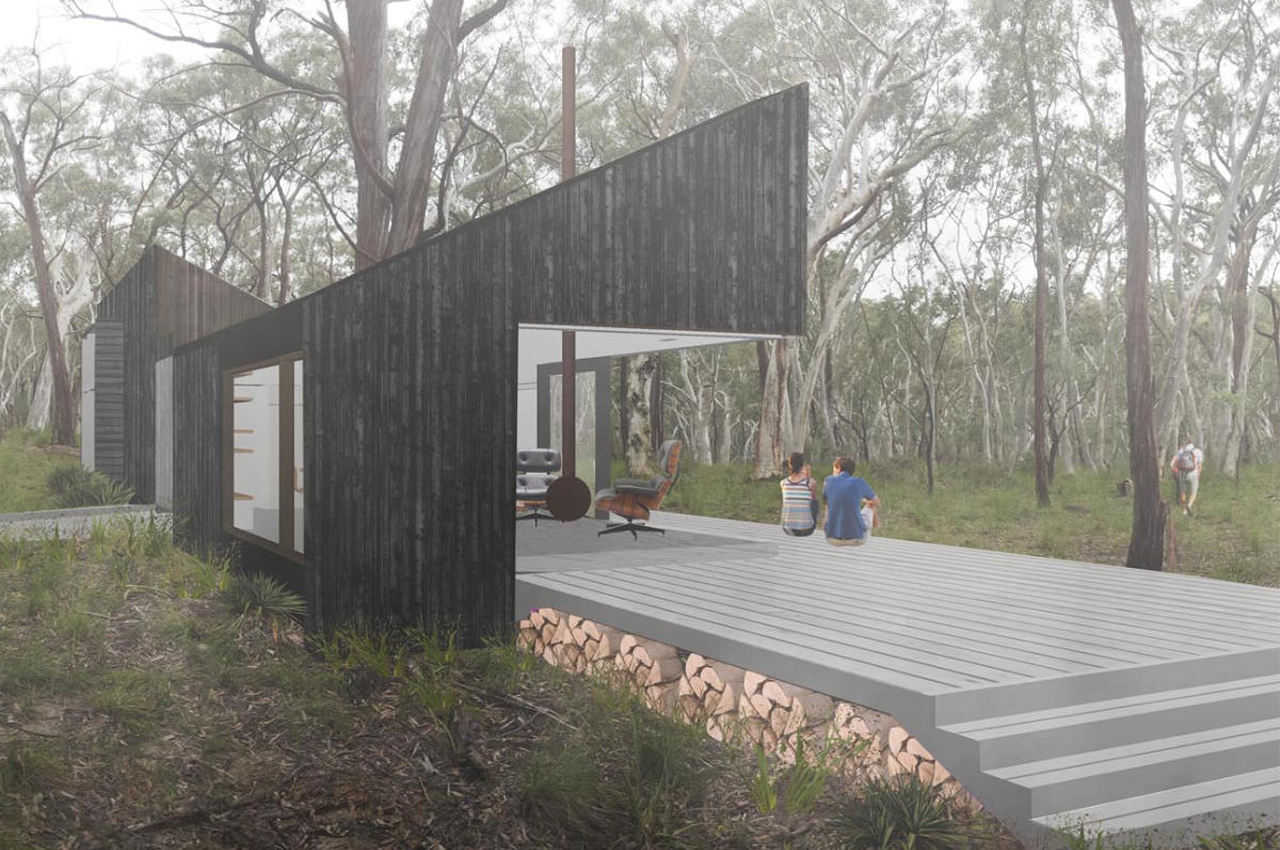
Operable without a backup generator, the Off Grid House is a bi-level home that’s essentially split into two sections. The two sections of the Off Grif House appear as two steeply pitched skillion-roofed boxes facing opposite directions and providing entirely different functions for passive insulation and energy generation. One of the roofed boxes, the sun-lit box, serves as the home’s sleeping quarters, storing the ample sunlight and heat during the day to keep the bedroom warm at night. Then, the escarpment-facing box is on the other side of things, receiving little to no direct sunlight during the day. These opposing orientations leave room for the roof’s 6.7KW solar system that generates power for everything from the underfloor heating and general electricity.
5. Rosie’s Tiny Home
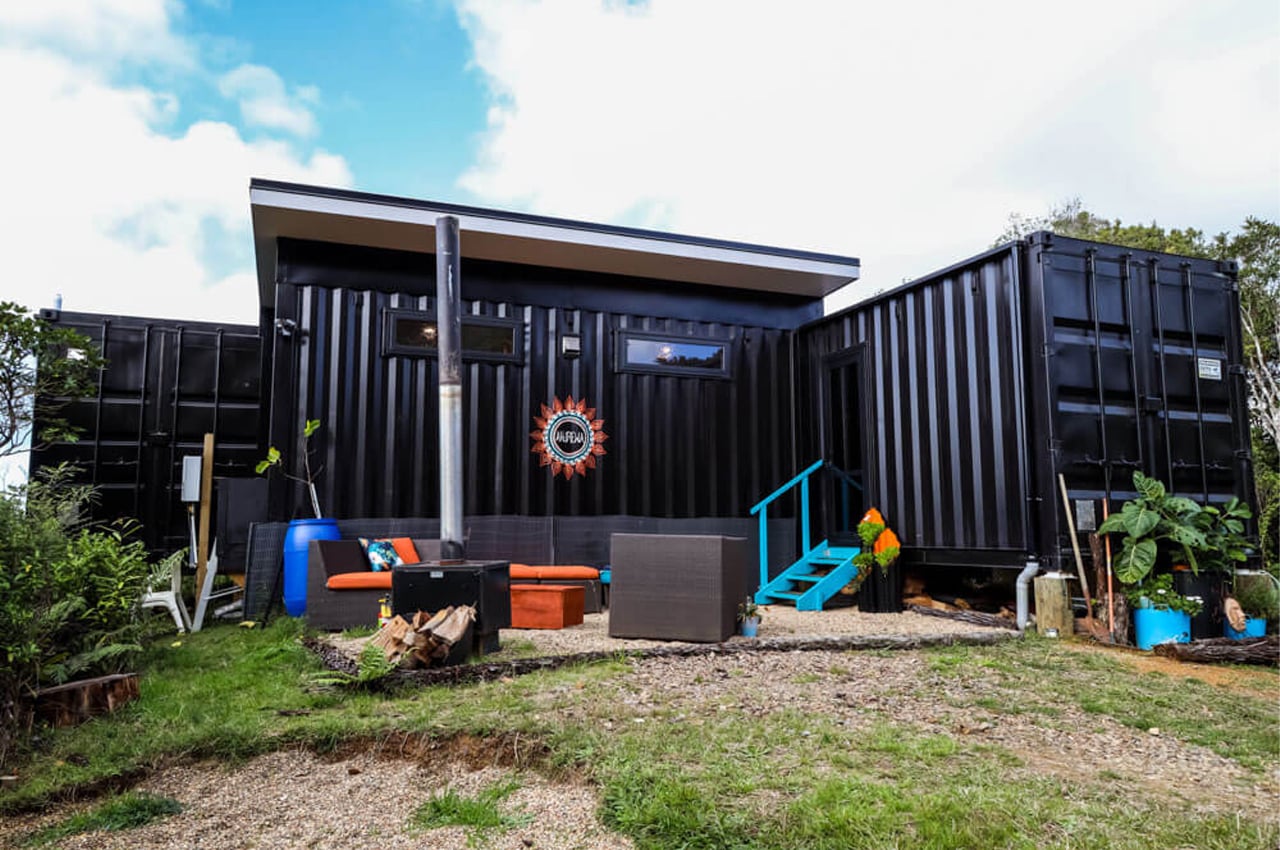
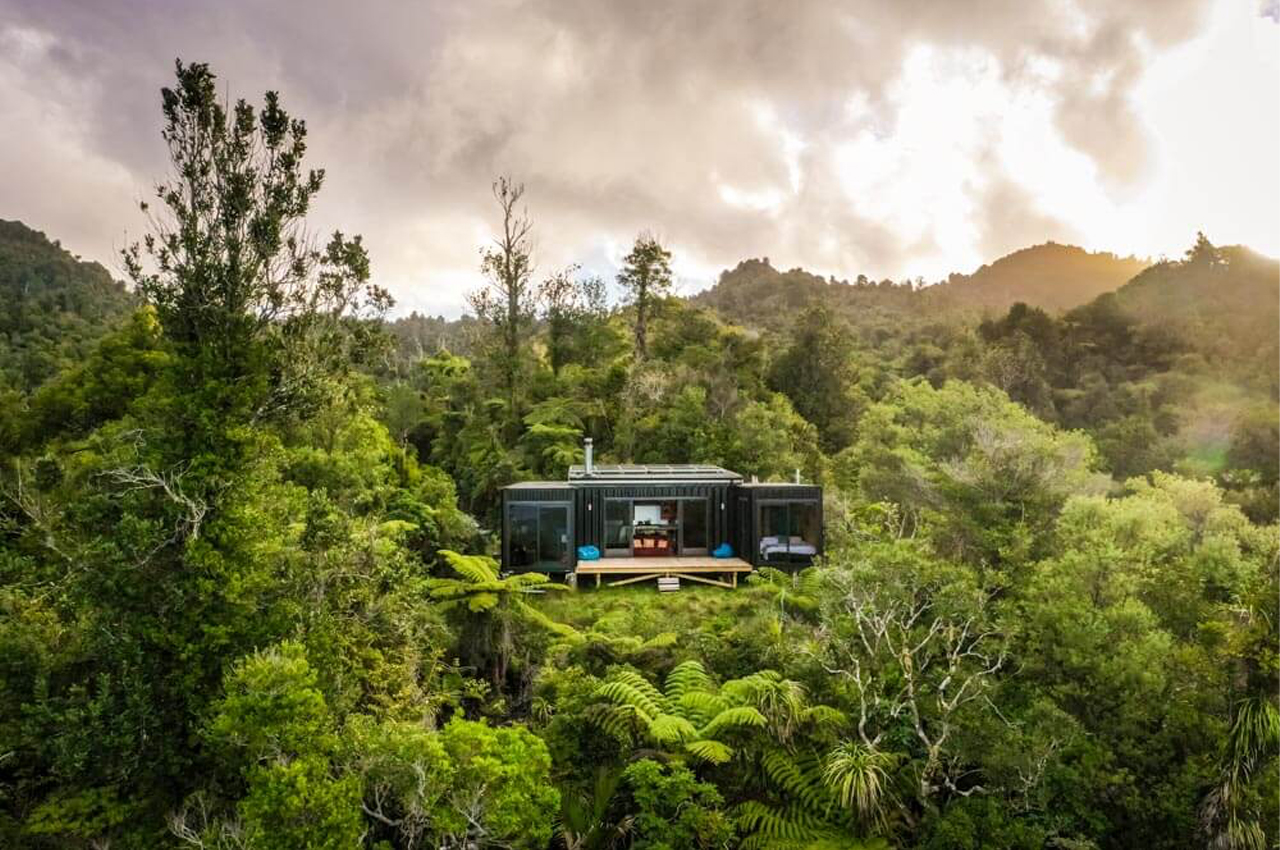
Composed of five shipping containers, Rosie’s tiny home benefits from natural eco-insulation and an industrial build that’s long-lasting and durable. Four of the five shipping containers are dedicated to actual living space, while the fifth shipping container only keeps the home’s mudroom. The mudroom primarily functions as a transitional space between the outdoors and indoors. Inside, Rosie houses the batteries, inverter, and power board for the solar panels that line the roof, keeping the hum of the inverter an appropriate distance away from the bedroom.
6. O-asis
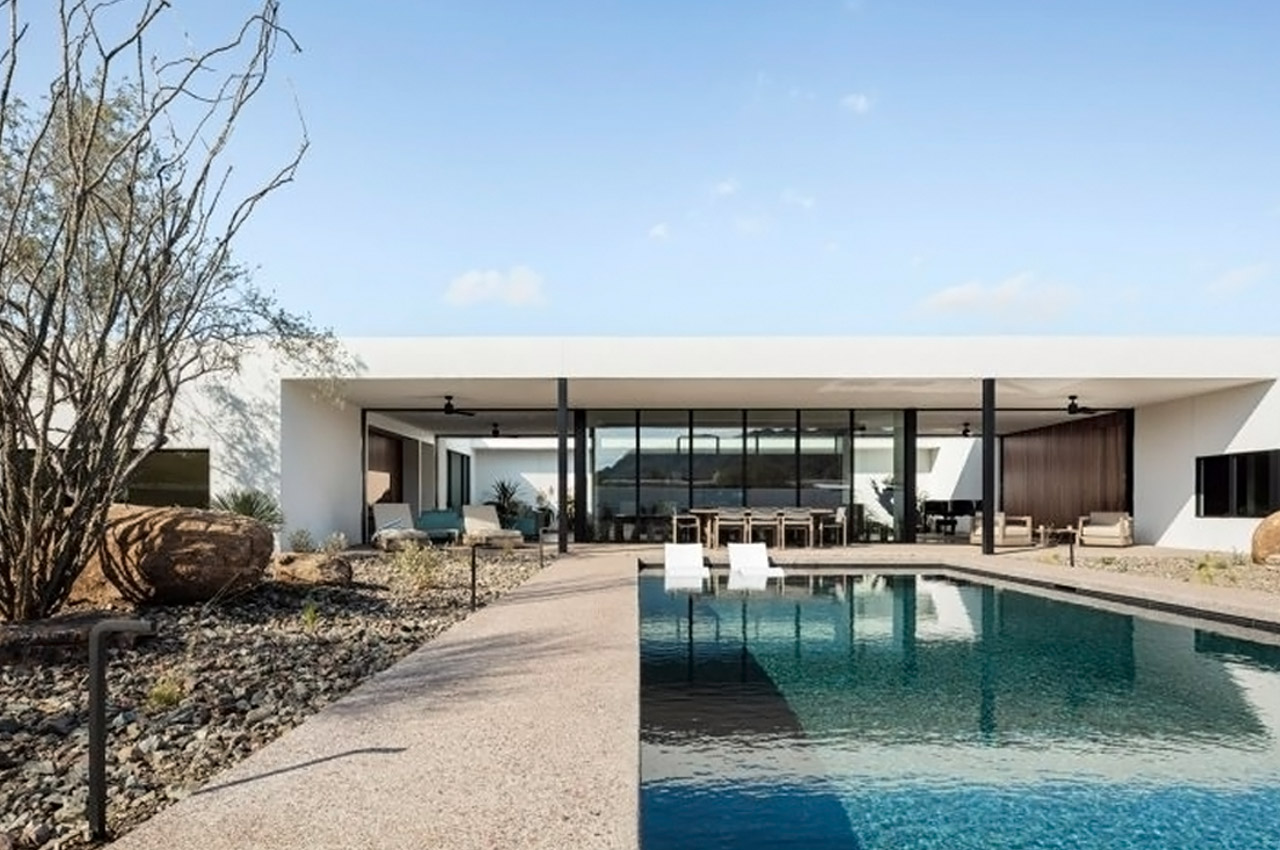
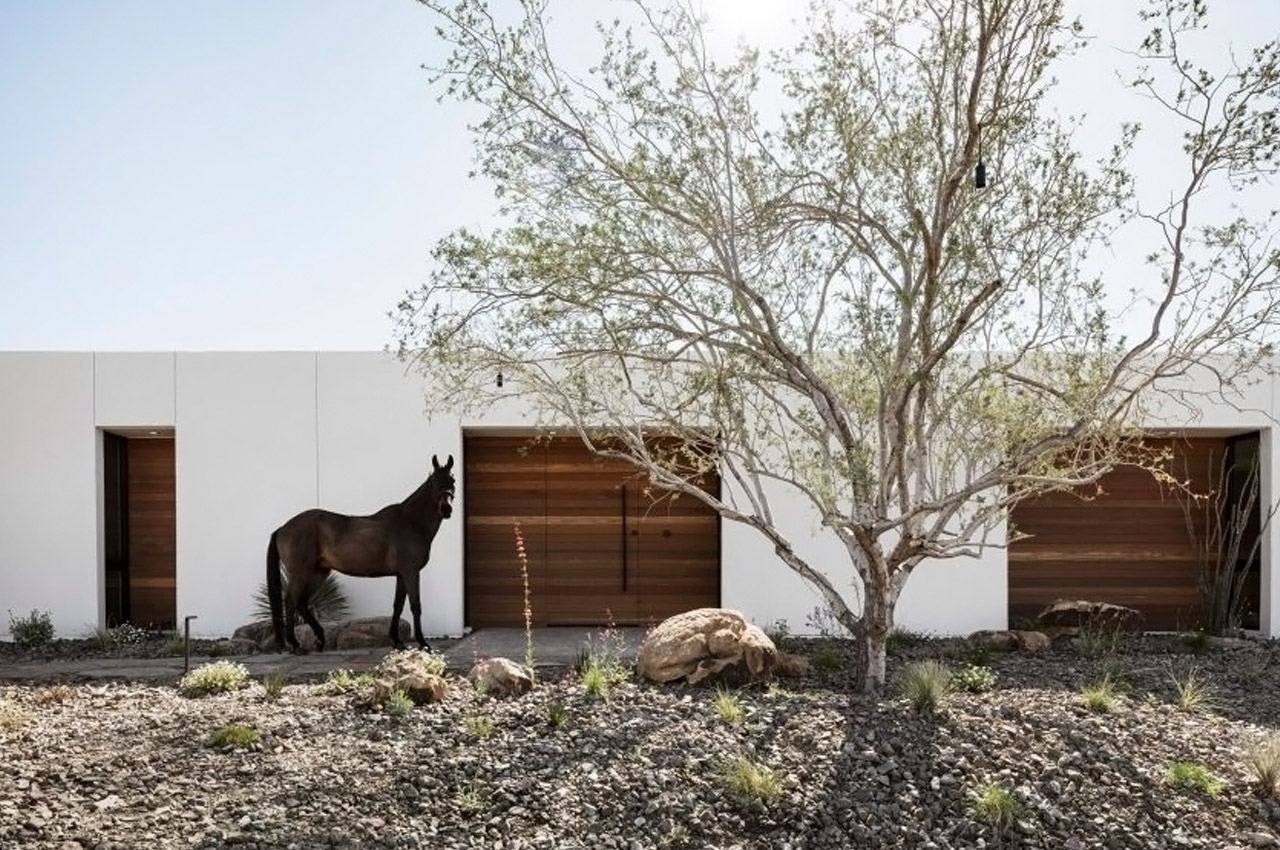
The Ranch Mine designed a courtyard house called ‘O-asis’ in the Arizona desert. The home is designed to be a “respite from city life”. O-asis features a rooftop solar array and Tesla Powerwall batteries. The home lies pretty low to the ground, with a height of only 12.5 feet. “Its strong horizontal form was designed as a datum for highlighting the dramatic shapes of the desert landscape,” said the firm.
7. Gawthorne’s Hut
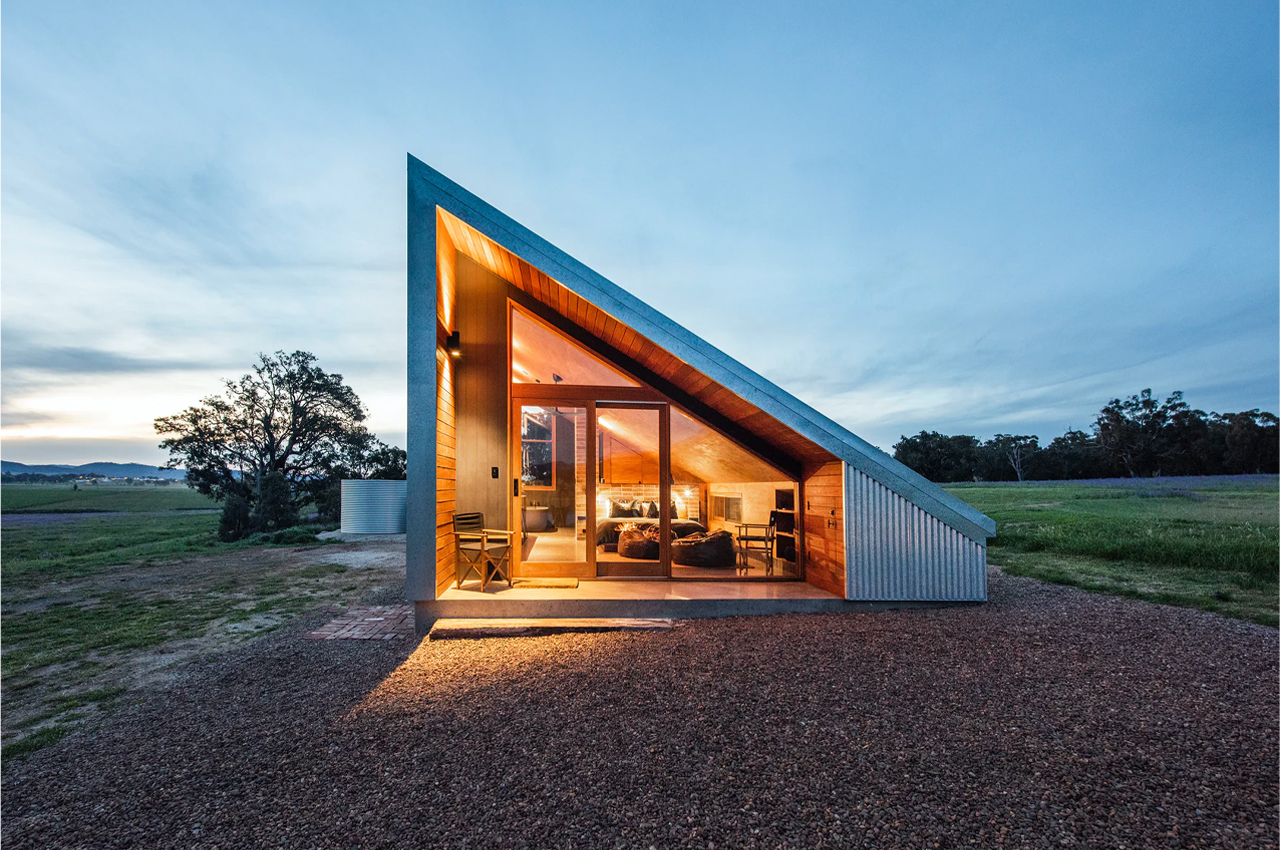
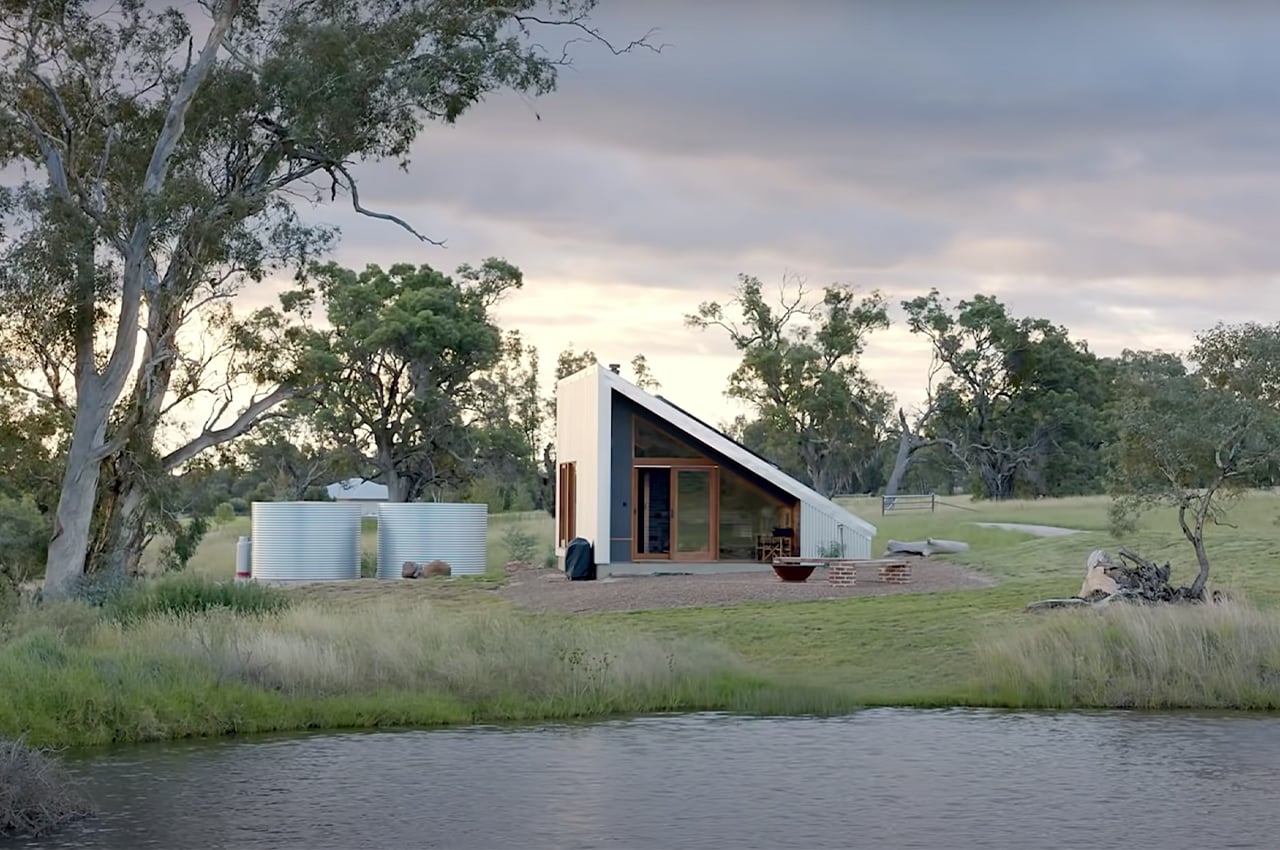
Gawthorne’s Hut is stationed on an expansive plot of Wilgowrah’s farmland, right beside a small, quaint pond. The tiny home was born out of Wilgowrah’s desire to introduce the possibilities of alternative income sources for farmworkers. Designed in a similar form to other farmland structures like hay sheds and outbuildings, Gawthorne’s Hut’s 30-degree roof hosts an array of north-facing solar panels to provide the farmhouse with internal and external power.
8. Ohariu
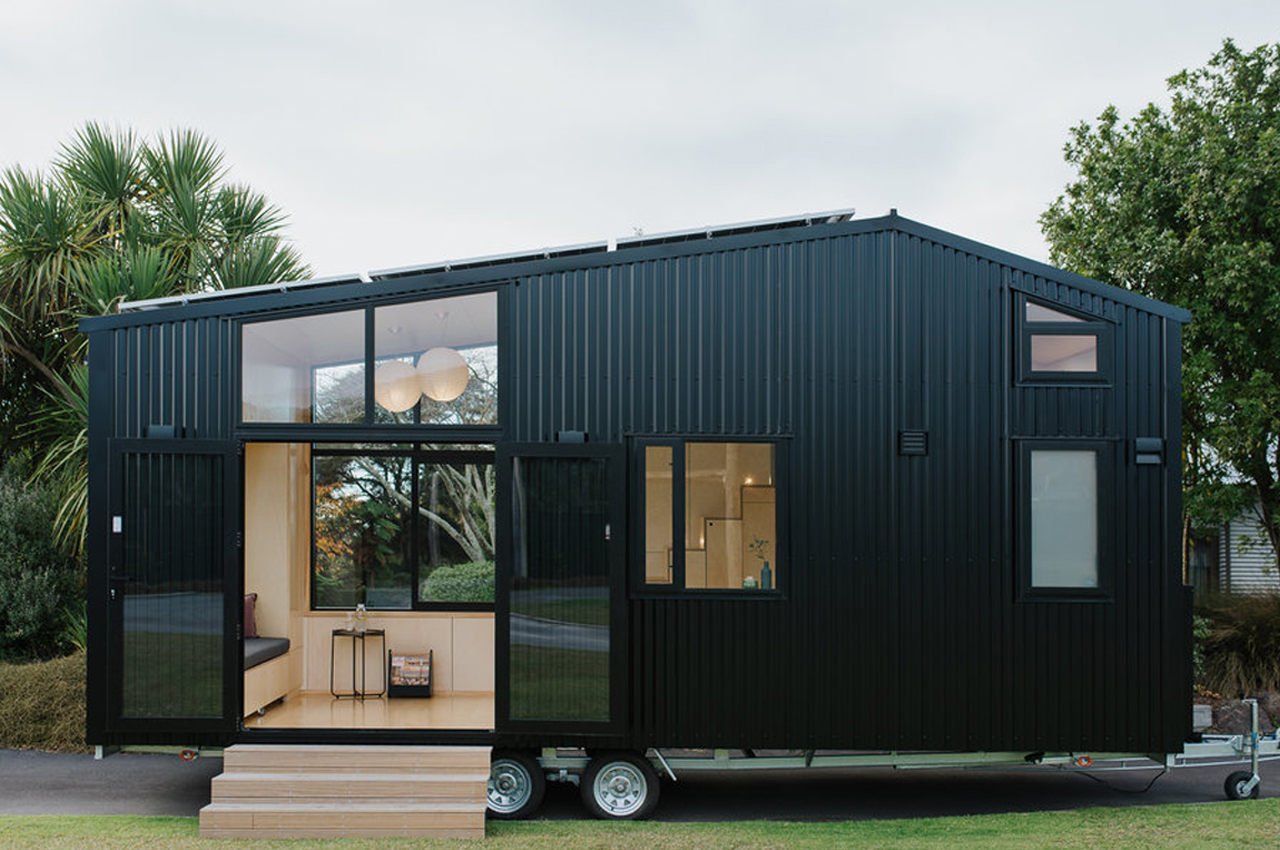
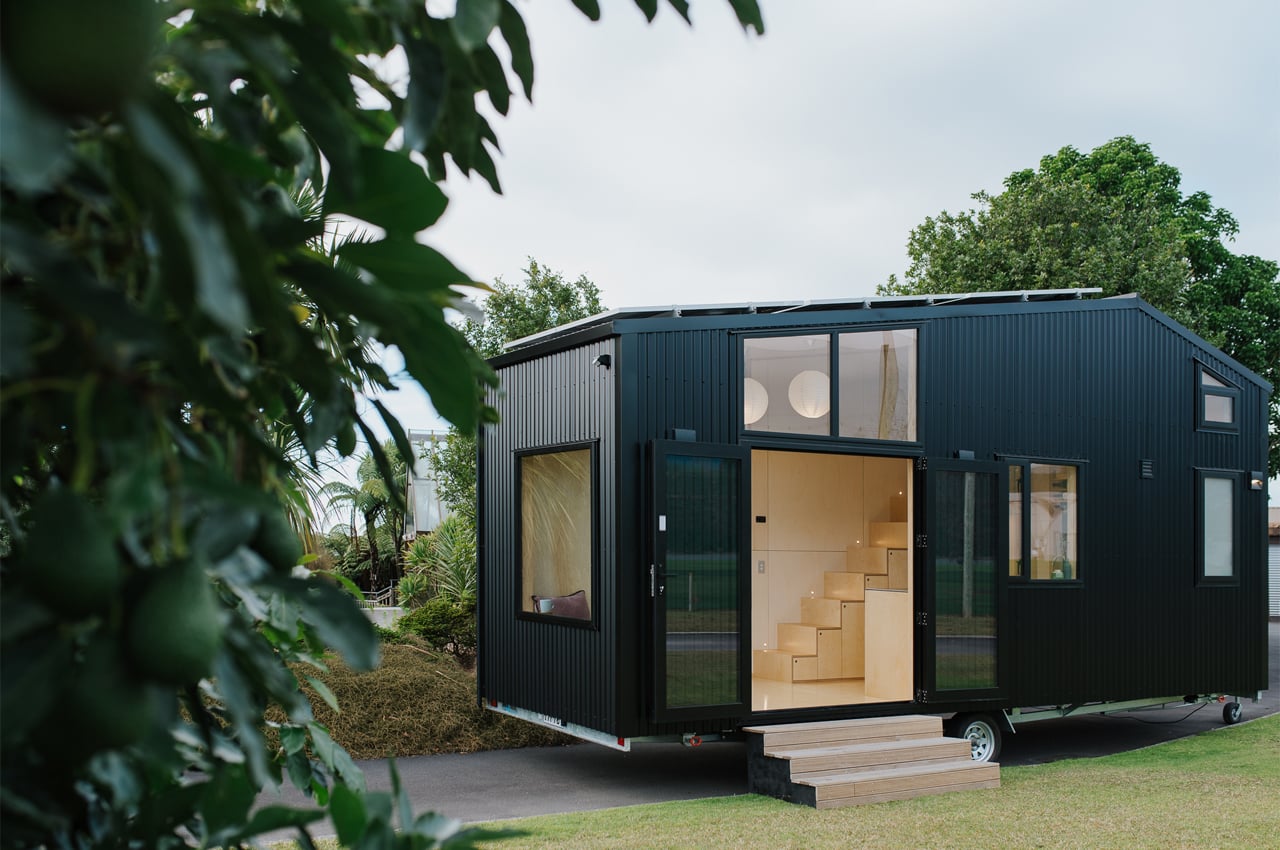
Built to be net-zero through several sustainable features and compact enough to meet all NZTA regulations for mobile homes, Ohariu was built by First Light Studio and Build Tiny from a client’s brief calling for, “a refined tramping lodge on wheels.” That’s code for hiking, for all us Americans. Since the tiny home would primarily be used for hiking trips and traveling throughout the outdoors, Ohariu was built to be adaptable and versatile above all else. Inside, the living spaces are described by the architects at First Light Studio as being, “more a large and very detailed piece of furniture than a traditional house build, the fit-out [focusing] on the things that are important and necessary.”
9. Garden House
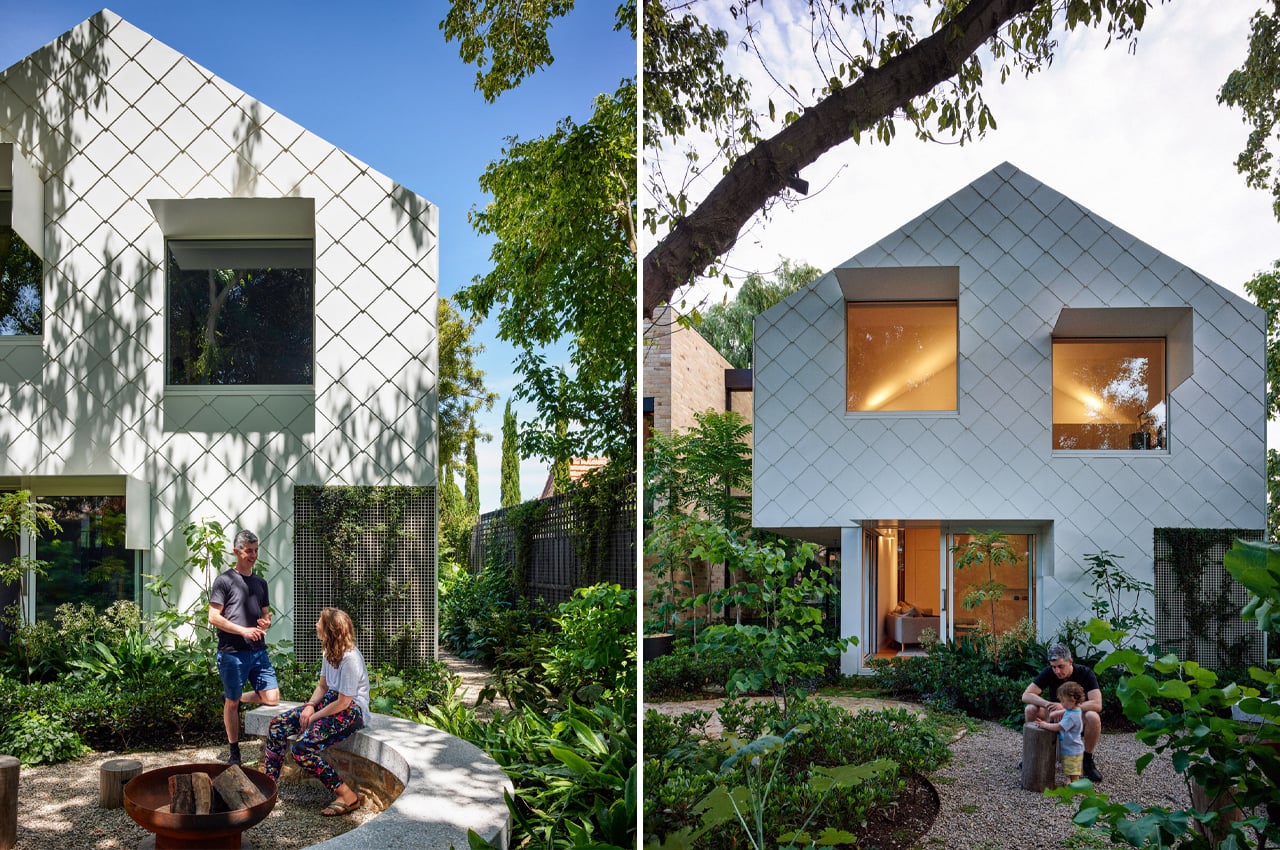

The architects behind Garden House ensured that the home utilized passive building techniques, filling out the roof with solar panels in addition to outfitting the inside with double studded wall insulation, underfloor insulation, formed from an insulated concrete slab. Even the building materials used were chosen for their sustainable edge, opting for recycled bricks to build the home’s linked pavilions behind its shingled white garage. Inside, the home does not require any gas for internal insulation of any kind–hot water, space heating and cooling, hydronic heating, and pool heating is all supplied through highly efficient heat pumps. In addition to being a fully automated smart home that runs on two Tesla power walls, the designers also did not disrupt the lot’s original landscape and natural greenery in building Garden House.
10. Nolla
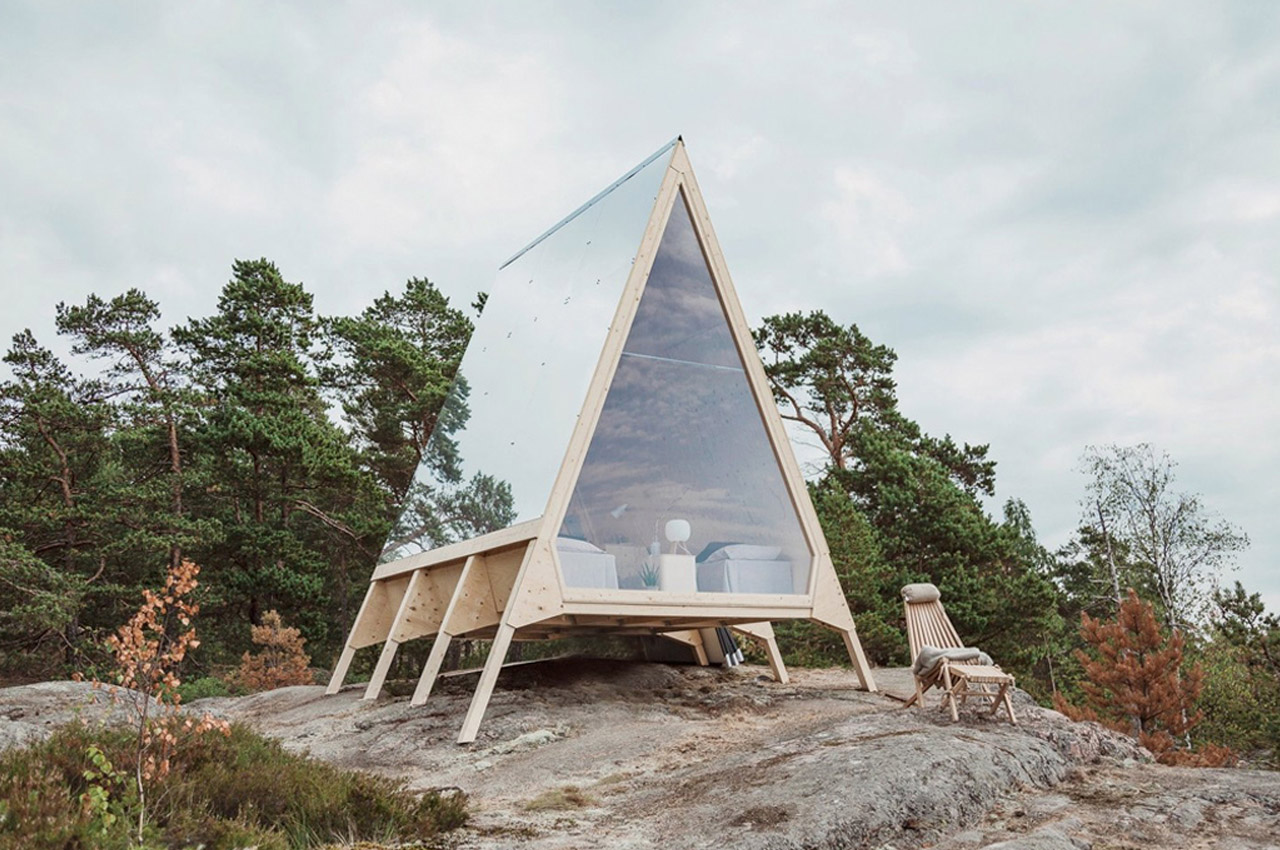

Robin Falck created an A-frame mirrored holiday house, ‘Nolla’. Literally meaning ‘zero’ in Finnish, Nolla was designed by Falck for Finnish renewable energy company Neste’s ‘Journey to Zero’ campaign, in an effort to build a world with minimal emissions. Functioning entirely on renewable energy, the cabin is located on the Vallisaari island, near Helsinki. It has been built entirely using sustainable materials such as local plywood and pine. In an attempt to encourage visitors to maintain a ‘zero waste lifestyle’, every element has been designed with the hope of not leaving behind any carbon footprint. Covered by mirrors and supported by wooden stilts, it excludes modern commodities. Nolla is powered by emission-free solar panels, and a Wallas stove that runs on Neste’s MY renewable diesel is provided for heating and cooking purposes.



